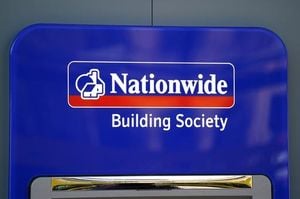With 2025 just around the corner, many Americans are curious about how much more they can contribute to their retirement savings. The Internal Revenue Service (IRS) has officially announced updated limits, which reflect increases aimed at helping employees save more as part of their financial future.
Starting from the next year, employees who participate in 401(k), 403(b), and most governmental 457 plans can expect to contribute $23,500, marking an increase of $500 from the previous limit of $23,000 established for 2024. This adjustment has been anticipated as part of the IRS's annual review of contribution limits based on inflationary factors, which they conduct to facilitate Americans' readiness for retirement.
Alongside the enhanced contribution limits for 401(k) plans, the IRS has not made changes to the IRA contribution limits. Traditional and Roth Individual Retirement Accounts (IRAS) will remain capped at $7,000 for 2025. This reflects stability amid fluctuated economic conditions, offering individuals clarity as they plan their retirement contributions.
For those aged 50 and older, the catch-up contribution limit will stay at $1,000 for IRAS. For 401(k) and similar plans, the overall contribution limit becomes $31,000, combining the new regulatory contribution limit and the existing catch-up allowance. For individuals aged 60 to 63, this adjustable plan aligns with the SECURE 2.0 Act and allows them higher catch-up contributions, set at $11,250.
The IRS has also modified various threshold limits for deductible contributions to traditional IRAS based on taxpayers' income. For 2025, the phase-out for single taxpayers will increase to $79,000 - $89,000, up from $77,000 - $87,000 for the previous year. Similarly, for married couples filing jointly, the phase-out will be $126,000 - $146,000, increasing by $3,000 from last year. Income limits for Roth IRAS will rise to $150,000 - $165,000 for individual tax filers.
These changes come amid rising concerns about whether American workers are adequately prepared for retirement. Experts suggest aggressive saving strategies are necessary to combat inflation and ever-increasing living costs. This is especially important for older workers who may not have had access to beneficial retirement plans earlier in their careers.
Representatives from major financial firms have expressed optimism about the upcoming changes, highlighting the joint efforts made by record keepers, payroll providers, and plan sponsors to adapt efficiently to the new regulatory guidelines. Some have even taken proactive steps, adopting 'opt-out' systems so employees can easily increase their contributions without hassle.
David Stinnett, Head of Strategic Retirement Consulting at Vanguard, remarked on the focus the industry has placed on encouraging retirement savings. "While traditional tools like automatic enrollment carry significant weight on strengthening retirement readiness, empowering employees nearing retirement to maximize savings is equally important," he stated.
For employees aged 50 and older who are part of SIMPLE retirement plans, the overall contribution limits are also increasing to $16,500 for 2025, raising the potential saving capacity.
Further analysis reveals the adjustments for Health Savings Accounts (HSAS) for 2025 as well. The IRS has raised annual contribution limits, enabling individuals with self-only coverage under qualified high-deductible health plans to contribute $4,300, compared to the previous limit of $4,150. Those with family coverage will be allowed to contribute $8,550, increasing from $8,300.
Simultaneously, this year's Social Security beneficiaries will experience modest growth as well, with announced increases based on inflation adjustments. A finalized cost-of-living adjustment of roughly 2.5% will see the average benefit rising around $50 monthly, effective January.
Even trendy new savings tools and financial wellness programs are seeing assimilation success, making retirement planning more accessible for everyone. This information is quite relevant, considering the emphasis on proper financial education and acumen as workers gear up for their retirements.
While above-mentioned changes will support workers on various fronts, the need for individuals to evaluate their long-term financial situations against these new limits is important. Eyes are also set on how effective these changes might cultivate more contributions among younger generations.
The conversation around contribution limits and retirement savings is integral to preparing financially without relying solely on government aid and programs. This fiscal knowledge not only enhances personal success but also mitigates potential societal burdens as populations age.
Overall, the IRS’s new contribution limits for 401(k), IRAS, HSAS, and additional retirement accounts may provide the boost needed for Americans saving for the future. Although maintaining awareness of looming limits and tax regulations can feel overwhelming, the payoff is anticipated to be significant as individuals weave their paths toward retirement.



